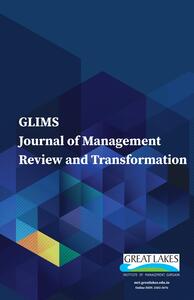
1 Symbiosis Institute of Business Management, Noida, Symbiosis International (Deemed University), Pune, Maharashtra, India
The revelation of Artificial Intelligence (AI) has been controversial for quite a long time, as most people have questioned whether AI will ever be able to surpass human intelligence (HI). While comparing the details between AI and HI, the abilities and vulnerabilities of each are also outlined in this article. Therefore, systematically, we strive to find accurate overlaps of the Human Mind and Machine Learning in the expanse of Cognitive Psychology, Computer Science, and Philosophy. As for our study, we also make a more pessimistic conclusion, which is a clear difference between human-AI and HI, suggesting that although it has a great ability to perform computing numerical data, pattern recognition, task performance, etc., it cannot generate attributes such as creativity, empathy or a higher-level of context sensitivity. On the other hand, HI has limitations, and they are biologically confined, bias-prone, and subject to bias. However, about the competencies of AI and HI identified in this article, it is argued that the current struggle between those two competitors is a win-win partnership. Thus, by observing each area of responsibility, we can see the benefits we can get from each to achieve the integration that makes it possible for the mutual synergy to ensure the progressive development of the two.
AI, artificial intelligence, human intelligence, digital, intelligence, sectors, machine learning, sustainable business
Ackerman, P. L. (1996). A theory of adult intellectual development: Process, personality, interests, and knowledge. Intelligence, 22(2), 227–257. https://doi.org/10.1016/S0160-2896(96)90016-1
Baron-Cohen, S. (2003). The essential difference: Male and female brains and the truth about autism. Basic Books.
Bhange, D., Pratik, G., & Dwivedi, R. (2025). Artificial intelligence (AI) versus human intelligence (HI): An analytical perspective [Unpublished master’s thesis]. Symbiosis Institute of Business Management, Noida, Symbiosis International (Deemed University).
Bostrom, N. (2014). Superintelligence: Paths, dangers, strategies. Oxford University Press.
Ceci, S. J. (1996). On intelligence: A bioecological treatise on intellectual development. Harvard University Press.
Daugherty, P. R., & Wilson, H. J. (2018). Human + machine: Reimagining work in the age of AI. Harvard Business Review Press.
Erikson, E. H. (1950). Childhood and society. Norton.
Flavell, J. H. (1963). The developmental psychology of Jean Piaget. Van Nostrand.
Floridi, L. (2016). The fourth revolution: How the infosphere is reshaping human reality. Oxford University Press.
Floridi, L., & Cowls, J. (2019). The ethics of artificial intelligence: Principles, challenges, and opportunities. Minds and Machines, 29(4), 687–707.
Galton, F. (1869). Hereditary genius: An inquiry into its laws and consequences. Macmillan.
Gardner, H. (1983). Frames of mind: The theory of multiple intelligences. Basic Books.
Goodfellow, I., Bengio, Y., & Courville, A. (2016). Deep learning. MIT Press.
Goleman, D. (1995). Emotional intelligence: Why it can matter more than IQ. Bantam Books.
Goleman, D. (2017). Emotional intelligence: Why it can matter more than IQ. Bantam Books.
Grewal, D., Roggeveen, A. L., & Nordfält, J. (2020). The future of retailing. Journal of Retailing, 96(1), 7–22.
Hawkins, J. (2021). A thousand brains: A new theory of intelligence. Basic Books.
Hebb, D. O. (1949). The organization of behaviour: A neuropsychological theory. Wiley.
Herrnstein, R. J., & Murray, C. (1994). The bell curve: Intelligence and class structure in American life. Free Press.
Hunt, E. (2010). Human intelligence. Cambridge University Press.
Ivanov, D., Dolgui, A., & Sokolov, B. (2019). The impact of digital technology and Industry 4.0 on the ripple effect and supply chain risk analytics.
Jensen, A. R. (1998). The g factor: The science of mental ability. Praeger.
Kaufman, A. S., & Kaufman, N. L. (2004). Essentials of 16PF assessment. John Wiley & Sons.
Kumar, A. (2025, September 11). AI vs Human Intelligence. Simplilearn. https://www.simplilearn.com/artificial-intelligence-vs-human-intelligence-article
LeCun, Y., Bengio, Y., & Hinton, G. (2015). Deep learning. Nature, 521, 436–444.
Luria, A. R. (1966). Higher cortical functions in man. Basic Books.
Makridakis, S. (2017). The forthcoming artificial intelligence (AI) revolution: Its impact on society and firms. Futures, 90, 46–60.
Mayer, J. D., & Salovey, P. (1997). What is emotional intelligence? In P. Salovey & D. Sluyter (Eds.), Emotional development and emotional intelligence: Educational implications (pp. 3–31). Basic Books.
Mitchell, T. M. (1997). Machine learning. McGraw Hill.
Neisser, U., Boodoo, G., Bouchard, T. J. Jr., Boykin, A. W., Brody, N., Ceci, S. J., Halpern, D. F., Loehlein, J. C., Perloff, R., Sternberg, R. J., & Urbina, S. (1996). Intelligence: Knowns and unknowns. American Psychologist, 51(2), 77–101. https://doi.org/10.1037/0003-066X.51.2.77
Pei, Z., Cao, Z., Long, M., & Wang, J. (2018). Multi-adversarial domain adaptation. Proceedings of the AAAI Conference on Artificial Intelligence, 32(1). https://doi.org/10.1609/aaai.v32i1.11767
Piaget, J. (1952). The origins of intelligence in children. International Universities Press.
Plomin, R., & Deary, I. J. (2015). Five special findings for genetics and intelligence. Molecular Psychiatry, 20(1), 98–108.
Raven, J. (2000). The Raven’s progressive matrices: Change and stability over culture and time. Cognitive Psychology, 41(1), 1–48. https://doi.org/10.1006/cogp.1999.0735
Russell, S., & Norvig, P. (2016). Artificial intelligence: A modern approach (3rd ed.). Pearson.
Russell, S., & Norvig, P. (2020). Artificial intelligence: A modern approach (4th ed.). Pearson.
Schneider, W., & Shiffrin, R. M. (1977). Controlled and automatic human information processing: I. Detection, search, and attention. Psychological Review, 84(1), 1–66. https://doi.org/10.1037/0033-295X.84.1.1
Simon, H. A. (1956). Rational choice and the structure of the environment. Psychological Review, 63(2), 129–138. https://doi.org/10.1037/h0042769
Spearman, C. (1904). ‘General intelligence’, objectively determined and measured. American Journal of Psychology, 15(2), 201–293.
Sternberg. (1985). Triarchic theory of intelligence. Cambridge University Press.
Sternberg, R. J., & Grigorenko, E. L. (2002). The general factor of intelligence: How general is it? Lawrence Erlbaum Associates.
Tegmark, M. (2017). Life 3.0: Being human in the age of artificial intelligence. Knopf.
Thurstone, L. L. (1938). Primary mental abilities. University of Chicago Press.
Torrance, E. P. (1974). Torrance tests of creative thinking. Personnel Press.
Wechsler, D. (1944). The measurement of adult intelligence. Williams & Wilkins.